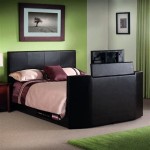Understanding the Essential Aspects of Antique Bed Size Charts
Antique beds, with their intricate designs and rich history, hold a special place in the world of furniture. However, determining the right size for an antique bed can be a perplexing task, especially considering the vast array of sizes available. This is where an antique bed size chart becomes an indispensable tool, providing valuable information to guide your decision-making process.
In this article, we will delve into the essential aspects of antique bed size charts, exploring the key factors that you need to consider when selecting the perfect bed for your space. We will cover the different bed sizes, their corresponding measurements, and the significance of understanding these dimensions to ensure a comfortable and stylish sleeping experience.
Length and Width Measurements
The most fundamental aspect of an antique bed size chart is the length and width measurements. These measurements determine the overall size of the bed and its suitability for different body types and room dimensions. Antique beds come in a wide range of lengths, typically ranging from 66 to 84 inches (168 to 213 cm). The width, on the other hand, can vary from 38 to 80 inches (96 to 203 cm), accommodating both single sleepers and couples.
Bed Type Variations
Beyond length and width, antique bed size charts also provide information on different bed types. Common bed types include twin, full, queen, king, and California king. Each type has its own unique dimensions, catering to the varying preferences and space requirements of individuals. Understanding the distinctions between these bed types is crucial for selecting a bed that fits both your physical needs and the available space.
Historical Context and Regional Variations
Antique bed size charts not only provide practical information but also offer a glimpse into the historical context of bed sizes. Bed dimensions have evolved over time, influenced by factors such as cultural norms, technological advancements, and the availability of materials. Additionally, regional variations exist, as different countries and cultures have their own unique bed size preferences. By considering the historical and regional context of antique bed sizes, you can make informed choices that align with your desired aesthetic and historical authenticity.
Mattress Compatibility
When referring to an antique bed size chart, it's important to consider mattress compatibility. While the bed frame itself has specific dimensions, the mattress you choose should also fit snugly within the frame. Antique beds may require custom-sized mattresses, so it's essential to verify the exact measurements to ensure a perfect fit. This ensures both comfort and support, preventing the mattress from shifting or sliding within the bed frame.
Aesthetic Considerations
Beyond practical considerations, antique bed size charts can also serve as a guide for aesthetic decisions. The size of the bed you choose will significantly impact the overall look and feel of your bedroom. A bed that is too small for the room can appear cramped and disproportionate, while a bed that is too large can overwhelm the space and make it feel cluttered. Carefully considering the bed size in relation to the room dimensions is essential for achieving a harmonious balance and creating a visually appealing bedroom.

Most Common Mattress Size Everest Linens

Vintage Sheet Size Guide Bed Sizes Mattress Chart Charts

The Ultimate Guide To A Mattress For Your Antique Bed Custom Makers

Vintage Size Guide For Bed Sheets Flat Sheet Sizes Mattress

Antique Style Solid Wood Bed Headboard Hand Carved Queen Or In 2024 King Size Dimensions Frame Sizes
Cove Canopy Bed Dimensions Drawings Com

Standard Bed Sizes Around The World Flobeds

Mattress Size Chart Tampa Makers

Furniture Of America Eastern King Natural Wood Inspired Bed With 10 Inch Memory Foam Mattress Antique Oak Com

Mattress Sizes And Bed Dimensions For Room Size Needs Eachnight







